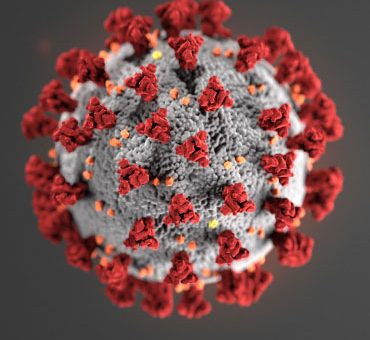
(UNDATED) – Results from the second phase of a scientific study of statewide random testing aimed at measuring the spread of the novel coronavirus in Indiana show fewer active infections and a greater number of people testing positive for antibodies.
“Taken together, this is evidence that the virus has slowed its spread within Indiana,” said Nir Menachemi, lead scientist on the study and a professor and Fairbanks Endowed Chair in the Indiana University Richard M. Fairbanks School of Public Health at IUPUI. “We currently have more people previously infected than are currently infected.”
In its second phase, the study — a collaboration between the Indiana State Department of Health and the Fairbanks School of Public Health — tested more than 3,600 Hoosiers between June 3 and June 8 for viral infections and antibodies of SARS-CoV-2, the novel coronavirus that causes COVID-19 disease. This number includes more than 2,700 people who were randomly selected and almost 1,000 volunteers recruited through outreach to vulnerable populations in Marion, Allen, and LaGrange counties.
“By using a random sample, we can get more valid and generalizable estimates of SARS-CoV-2 infection in Indiana,” said Paul Halverson, founding dean of the Fairbanks School. “By taking multiple random samples across different time periods, we are able to observe how the virus is affecting Hoosiers over time.”
After analyzing the results of Phase 2 testing in comparison to the results of the first phase that took place in late April, IUPUI researchers determined that the statewide estimate for active infection rate was 0.6 percent — a sharp decrease from the 1.7 percent observed in Phase 1. The estimate for antibody positivity in Phase 2 was 1.5 percent — an increase from 1.1 percent from the Phase 1 results.
“While the reasons for this decline could vary, it is likely that the virus has slowed due to our collective efforts to be safer, engage in social distancing, and reduce transmission by wearing masks and adhering to higher hand- and surface-hygiene standards,” Menachemi said. “This was an example of Hoosiers successfully hunkering down during the initial outbreak.”
While the ratio between active infections and antibody positivity improved in Phase 2, researchers continued to see disparities among minority communities. These groups still show evidence of being harder hit with coronavirus infections, Menachemi said.
For non-whites, the active infection rate in Phase 2 was 1.4 percent — lower than the 3.4 percent observed in Phase 1 — and antibody positivity rates were 5.6 percent, which was greater than the 1.6 percent found in the first phase.
The estimated statewide rate among Hispanics showed a decrease in active infections from 6.9 percent in Phase 1 to 2.6 percent in Phase 2. Antibody positivity rates among Hispanics increased from 1.5 percent in Phase 1 to 8.5 percent in Phase 2.
Across Indiana’s 10 Public Health Preparedness Districts, results followed a similar pattern, with decreases in active infection rates and increases in antibody positivity rates.
“The reason we were able to move to Stage 4 of our reopening plan was because Hoosiers took steps to reduce the transmission of COVID-19, and these data show that those steps have worked,” State Health Commissioner Kris Box said. “But we still have active transmission, and we must continue to take steps to protect our most vulnerable Hoosiers.”
Based on Phase 2 data, the researchers estimated that 43 percent of all Indiana residents who are currently infected with SARS-CoV-2 show no symptoms. This rate is similar to the almost 45 percent who tested positive for active viral infection and reported no symptoms at all in the first phase of testing.
“We should be aware of the experiences of other states. The virus can still be actively transmitted if we are not careful,” Menachemi said. “Based on the preliminary Phase 2 results, it appears we have been successful in limiting the spread of the coronavirus but have not eliminated the risk. Hoosiers need to be diligent to adhere to any and all measures designed to keep transmission low.”
The next phases of testing are planned for fall 2020 and April 2021.
For more information about COVID-19 or to find a testing site, visit www.coronavirus.in.gov.



